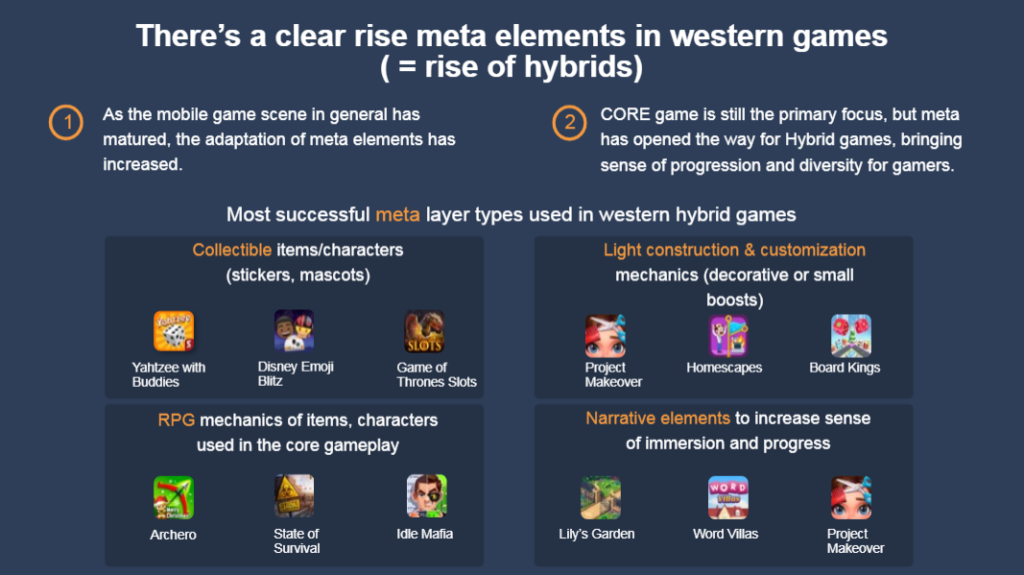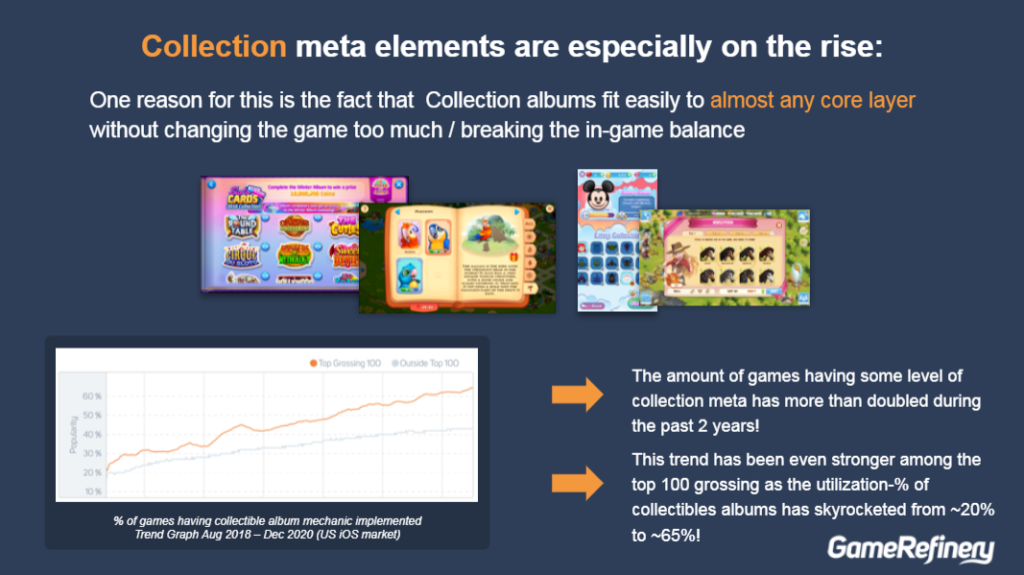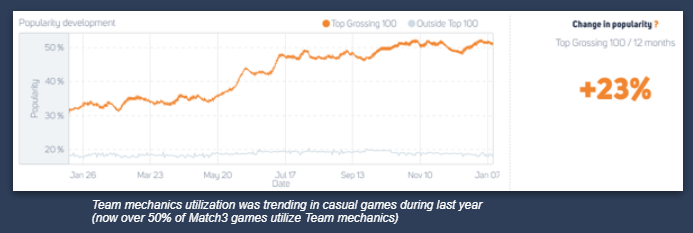Along with the maturation of the mobile market, the introduction of meta-mechanics into casual games is becoming an increasingly common practice among Western developers. As a rule, we are talking about collections, customization, role progression and narrative.
Kalle Heikkinen, a leading game analyst at GameRefinery, told about this at his speech at WN Winter’21.
Kalle Heikkinen
According to him, now this trend has become the most obvious.
It used to be commonplace for hardcore and midcore projects. Today it is an ordinary thing for casual projects. Kalle calls such games (casual core plus meta-mechanics) hybrids.
He calls the most successful and frequently encountered meta-mechanics, as we mentioned a little earlier, the following:
- collections — collecting objects or characters as entities that do not affect the core (stickers);
- role progression — the mechanics of the growth of the parameters of things and characters used in the bark;
- customization/simplified construction — mechanics that allow you to change the appearance of characters and environments, which does not affect or minimally affects the core;
- Narrative elements — integrating the plot into the game to stimulate engagement and progress.
The popularity of collections is growing most rapidly,” GameRefinery notes. Over the past two years, the share of games with this meta-mechanics in the American box office top has grown from just over 20% to 65%. The reason for this is their easy integration into any game: collections do not require changing the cor.
To the question, why add meta to casual games at all, making it “hybrid”, Kalle answers like this:
- meta-mechanics, if desired, provide additional, deeper experience, which modern gamers are increasingly waiting for, including from casual projects;
- meta-mechanics add additional monetization funnels to the game, while sometimes not even affecting the core;
- meta-mechanics give players new goals, thereby increasing retention.
Despite the fact that meta mechanics can be integrated into the game with almost any core, the key to success is to find the right combination of meta and core. As one of the examples, Kalle cites Coin Master, where slots as a core work together with collections and simplified construction.
Of course, the story does not end exclusively with the mentioned meta-mechanics. In casual games, the importance of social mechanics is also growing. If earlier everything was usually limited to sending hearts, exchanging emoticons and visiting other people’s farms/cities, today cooperative functions are becoming popular. According to GameRefinery, by now 50% of the three-in-a-row in the American box office top have team mechanics. This is 23% more than a year earlier.
And, of course, if we talk about the mechanics that are rapidly gaining popularity, it is impossible not to mention the Season Pass. The mechanics, which gained popularity thanks to Fortnite, are becoming more widespread in casual games every month. Over the past year, the number of casual projects with seasonal passes in the American box office top has increased by 26%. Now a third of blockbusters “for a wide audience” belong to such.
Kalle calls the most important quality of mechanics that it increases both retention and IAP monetization. At the same time, as in the case of collections, its integration has almost no effect on the core. Although, of course, its balance should be treated carefully (a large number of free rewards for progress will definitely not have a positive effect on monetization).
The analyst also cited the percentage of distribution of other popular meta-mechanics in the top 20% of games:
- gacha (loot boxes) — 65%;
- reward for watching videos — 75%;
- temporary IAP offers – 97%;
- the piggy bank that opens for IAP is 32%.






